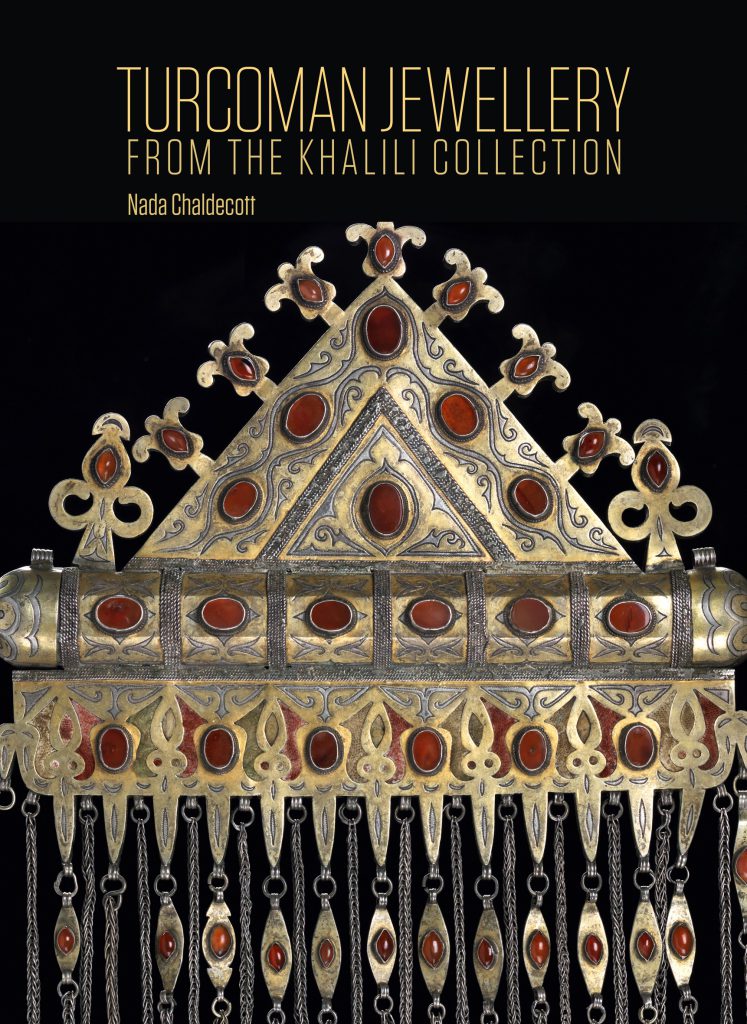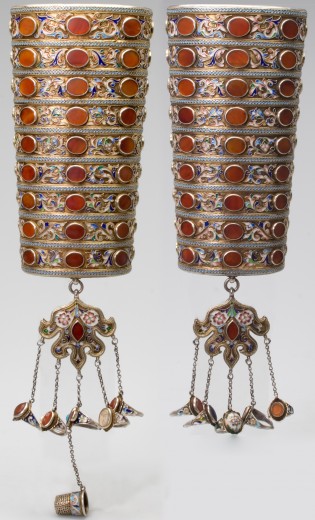


Strong traditions and a particular lifestyle define the Turcoman of Central Asia. This long-established worldview found its most expressive artistic representation in the carpets and textiles they are known for, and equally so in their jewellery. Made primarily of silver and often massive in scale, the jewellery is characterized by its use of abstract designs, often mirrored or repeated, enhanced with the use of gilding and colourful semiprecious stones. The Khalili Collection includes some 150 pieces of Turcoman jewellery from the late 19th to mid-20th century. Most are of the Tekke, Yomud and Ersari tribes; others are from the urban centres within the region. Among the latter are a magnificent pair of cuffs with rings, made in Bukhara and stamped with a Russian mark dated 1883. They are inscribed with a dedication in Persian bearing the date 1912 to the daughter of a high ranking official of the Amir of Bukhara. The group of Turcoman jewellery in the Collection includes headdresses, headbands and temple ornaments; earrings and nose rings; hair and plait ornaments; neckbands, necklaces, pendants and various other pectoral ornaments; fasteners or clasps; and bracelets, cuffs and rings. In addition, there are some costumes and horse and camel ornaments. The material is presented in its historical, geographical and cultural contexts, with a strong emphasis on the important role played by traditions and beliefs in determining the artistic vocabulary of the Turcoman.
Nada Chaldecott – Art historian with a special interest in the arts of Central Asia and India
hardback
36 × 26 cm, Isbn: 978-1-874780-93-9
Release date: 2024


Please register your email to download a pdf of this book.